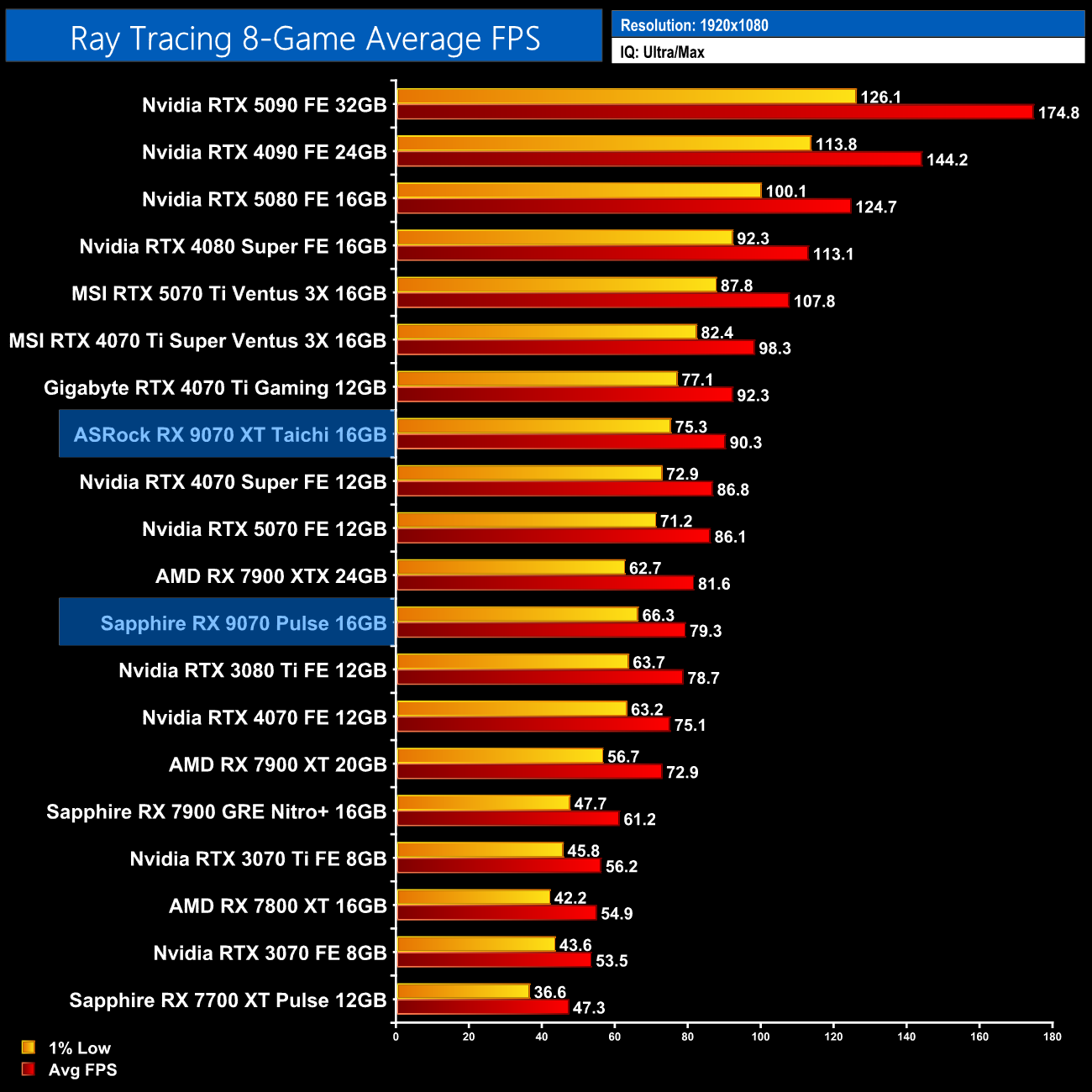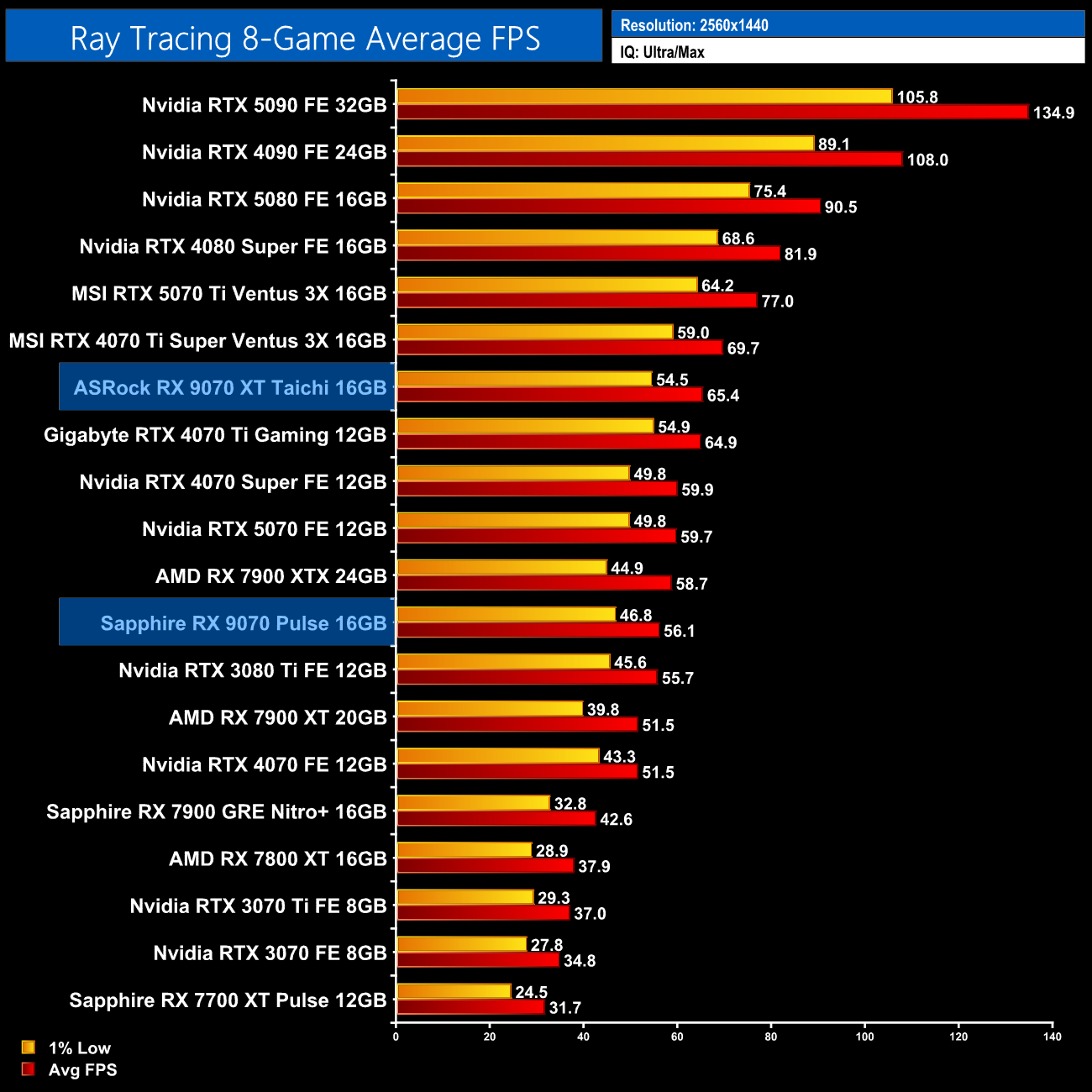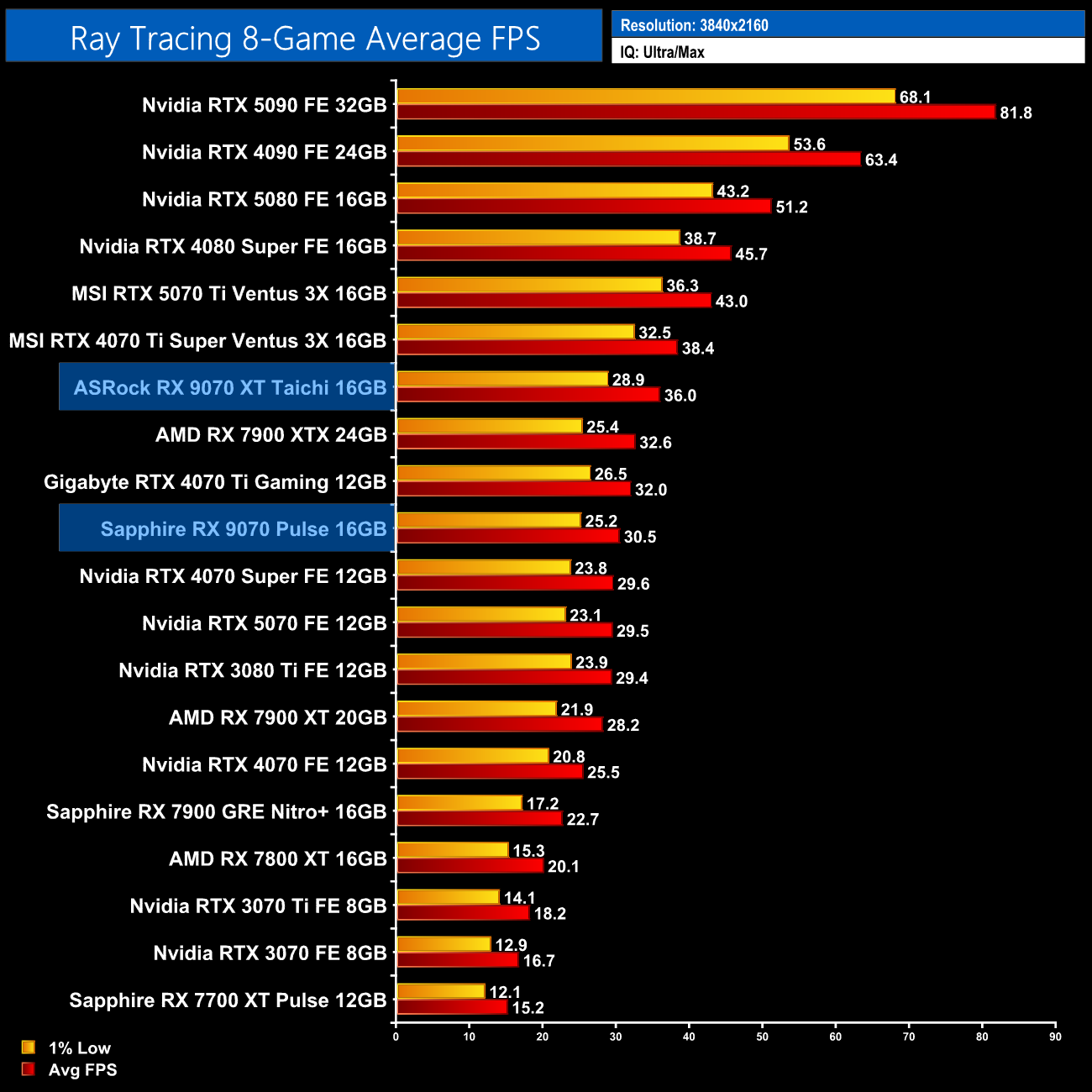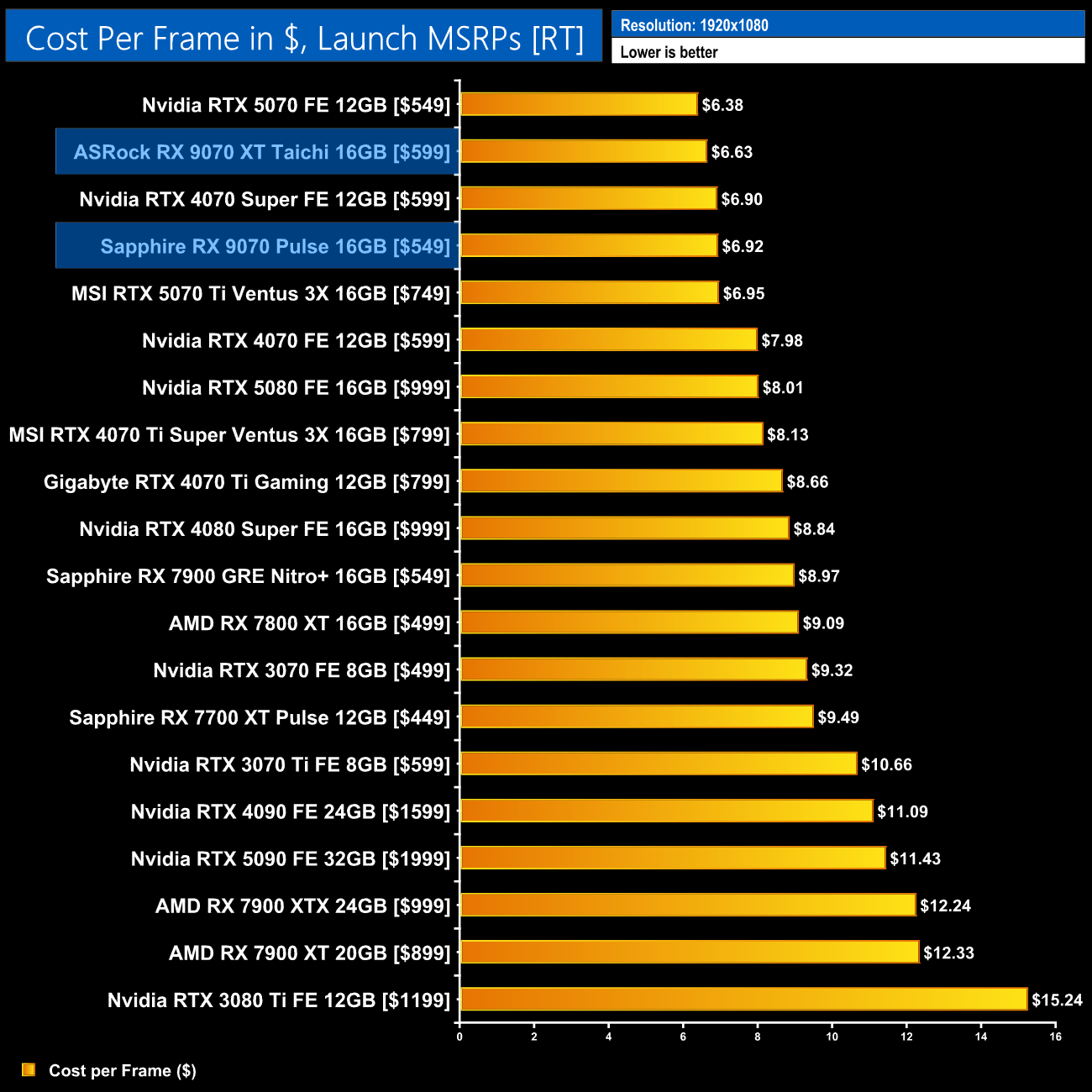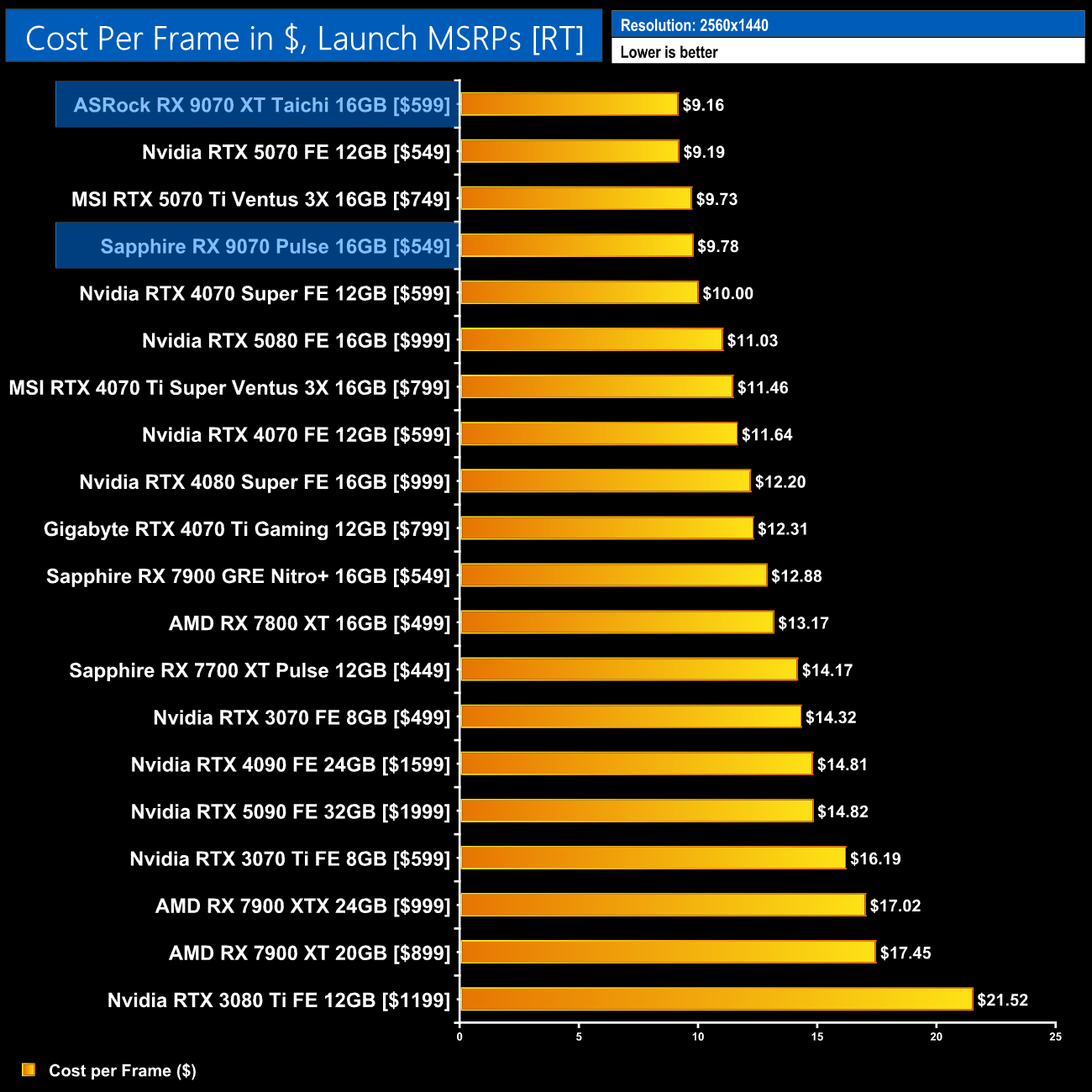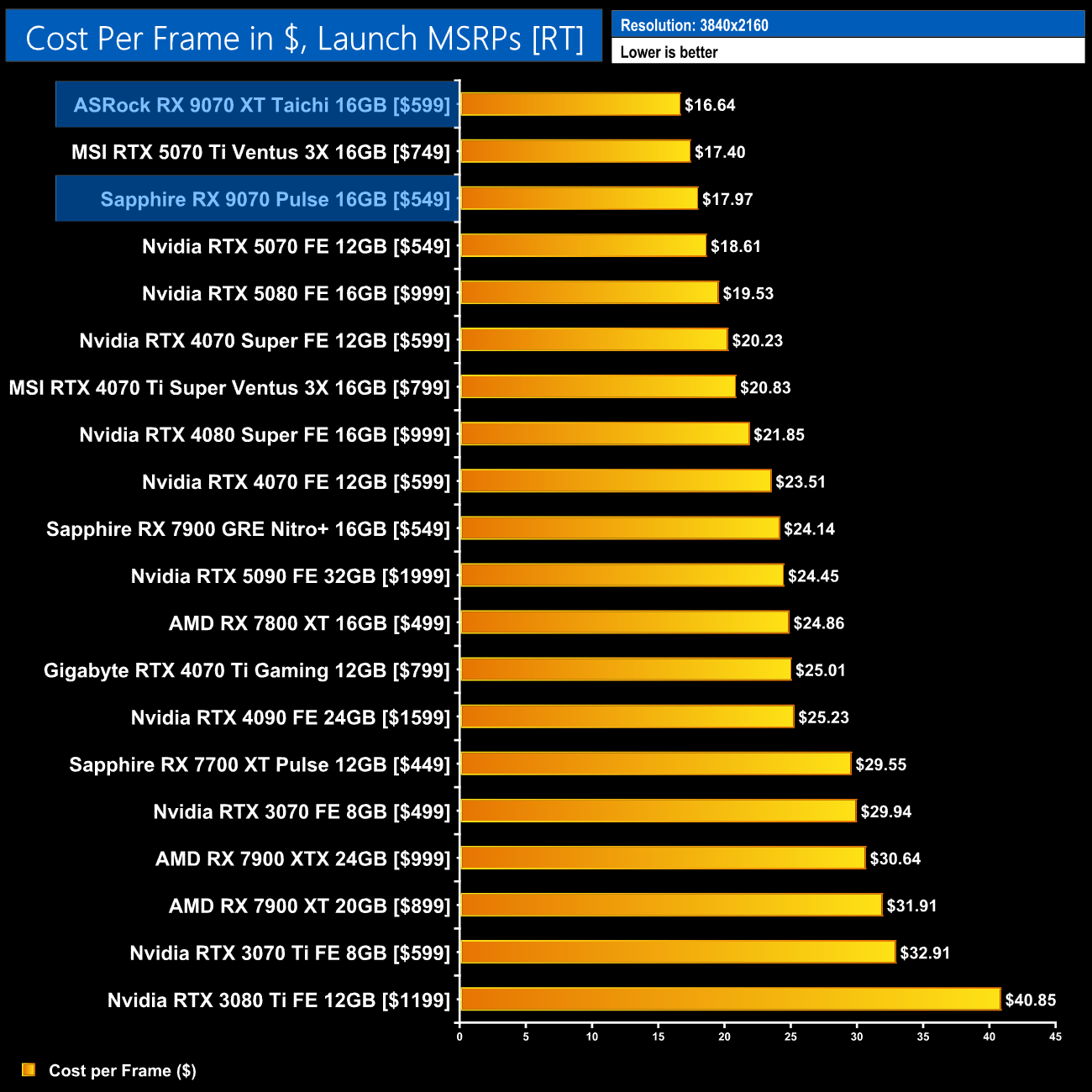Ray tracing 8-game average FPS
Here we present frame rate figures for each graphics card, averaged across all 8 ray traced games on test today. These figures can disguise significant variations in performance from game to game, but provide a useful overview of the sort of performance you can expect at each resolution tested.
Overall then, there's no doubt that RDNA 4 has improved ray tracing performance significantly. It seems that the more ray tracing is done, the bigger the gains – as we saw in Alan Wake 2 and Black Myth: Wukong, where the 9070 XT was some 50% faster than the 7900 XTX.
Unfortunately, those are also the games where Nvidia shows its dominance in this segment, and as such the 9070 XT is still the slower card for ray tracing – losing out to the 5070 Ti by 15% on average at 1440p. Versus the 7900 GRE, we see a 54% generational gain, bigger than AMD's claimed 42% figure.
Cost per frame, launch MSRP data
Please note this only compares ray traced performance and value.
Despite being slower overall, the 9070 XT has shown enough that it's actually now a real contender when it comes to ray tracing cost per frame – edging out the RTX 5070 at the top of the chart. The differences are minimal at best, but this is a huge turn around compared to RDNA 3, which was really nowhere for ray tracing value.
 KitGuru KitGuru.net – Tech News | Hardware News | Hardware Reviews | IOS | Mobile | Gaming | Graphics Cards
KitGuru KitGuru.net – Tech News | Hardware News | Hardware Reviews | IOS | Mobile | Gaming | Graphics Cards


